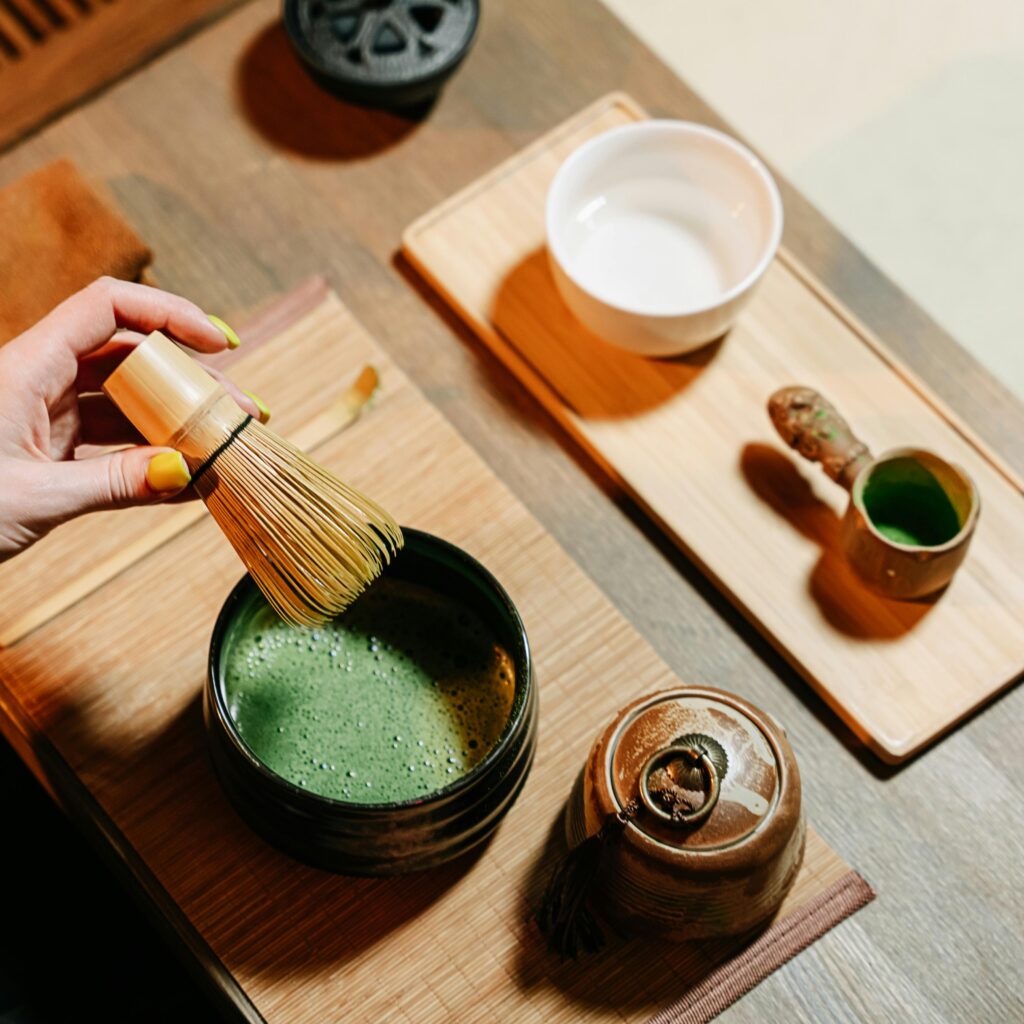Definition of Aracha in the matcha glossary

Temperature Science and Extraction Dynamics
Water temperature affects multiple aspects of matcha preparation simultaneously. Solubility of various compounds increases with temperature, but not uniformly—L-theanine dissolves readily at lower temperatures while catechins require more heat. This differential extraction explains why temperature adjustments alter flavor balance beyond simple intensity changes.
The optimal 70-80°C (160-175°F) range balances several factors. Sufficient heat ensures complete powder suspension while avoiding chlorophyll degradation that occurs above 80°C. Lower temperatures preserve heat-sensitive vitamins and prevent excessive catechin extraction that creates bitterness. Higher temperatures may seem to produce stronger flavor but actually destroy delicate compounds that provide matcha’s characteristic complexity.
Temperature Precision: Every 5°C variation significantly alters extraction—75°C emphasizes sweetness while 80°C enhances umami depth.
Measuring temperature accurately requires proper tools and technique. Infrared thermometers provide instant surface readings but may miss temperature gradients. Probe thermometers offer accuracy but require immersion that may introduce contamination. Traditional methods estimate temperature by water appearance and sound—small bubbles forming at 70°C, gentle steam at 75°C, and vigorous bubbling approaching 80°C.
Classic Ratios and Variations
Traditional usucha preparation employs 2 grams matcha to 70ml water, creating balanced flavor accessible to most palates. This 1:35 ratio provides sufficient dilution preventing overwhelming intensity while maintaining characteristic matcha flavor. Ceremonial grade matcha performs optimally at this ratio, with natural sweetness balancing any astringency.
Koicha thick tea doubles matcha to 4 grams while reducing water to 40ml, achieving 1:10 ratio that creates paint-like consistency. Only highest grade matcha suits this concentration—any bitterness becomes unbearable when concentrated. The intense preparation serves ceremonial purposes rather than casual consumption.
Western preferences often favor dilution, using 1-1.5 grams matcha with 120-150ml water for approachable introduction. This lighter preparation reduces intensity while maintaining beneficial compounds. Conversely, some practitioners prefer stronger 3 grams to 70ml ratios emphasizing robust flavor.
Adjusting for Grade and Purpose
Culinary grade matcha requires different parameters than ceremonial grades. Higher temperatures around 85°C help extract flavor from robust leaves, while increased water ratios offset inherent bitterness. Use 1 gram culinary matcha to 100ml water for basic preparation, adjusting based on specific applications. Baking preparations may concentrate further since other ingredients provide dilution.
Seasonal adjustments reflect traditional sensitivity to natural cycles. Summer preparations use slightly cooler water (65-70°C) and increased dilution for refreshing qualities. Winter calls for fuller temperature (75-80°C) and standard ratios providing warming properties. These subtle modifications acknowledge matcha’s role beyond simple beverage to seasonal harmony practice.
Cold Preparation Calculations
Cold water extraction requires different ratios compensating for reduced solubility. Use 3-4 grams matcha per 200ml cold water, shaking vigorously to overcome surface tension preventing proper mixing. Extended contact time of 2-4 hours allows complete extraction despite temperature limitations. Some compounds remain less accessible in cold preparation, creating different flavor profiles emphasizing sweetness over umami.
Ice preparations require concentrated ratios accounting for dilution. Prepare double-strength matcha using 4 grams per 70ml hot water, immediately pouring over ice equal to original water volume. Rapid cooling preserves volatile compounds while achieving standard strength through controlled dilution. This method maintains superior flavor compared to matcha whisked directly with cold water.
Room temperature preparation offers compromise between hot and cold methods. Water at 20-25°C requires vigorous whisking but preserves all heat-sensitive compounds. Use standard ratios with extended 30-second whisking duration ensuring complete suspension. This method particularly suits premium matcha where preserving delicate flavors justifies extra effort. Some practitioners prefer room temperature for morning preparation, finding hot beverages less appealing immediately after waking.
Frequently asked questions
We’re here to help with all your questions and answers in one place. Can’t find what you’re looking for? Reach out to our support team directly.
Discussion: Definition of Aracha in the matcha glossary





